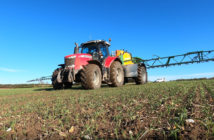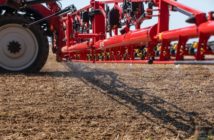Producers growing milling wheat are advised to consider biostimulants to support their crops achieving 13% protein content.
With less available inputs this season, Timac Agro UK technical manager, David Newton, says incorporating biostimulants in crop nutrition programmes can support crops where nitrogen applications have been pulled back.
“The high price and low availability of artificial fertiliser has dominated the news agenda, and isn’t going away,” says Mr Newton.
“However, growers still need to meet quality standards for cereals, including protein content for milling wheat. We therefore need to look to other tools such as biostimulants which can help crops meet their potential.”
He advises making biostimulant applications at T1 or T2 growth stages, to stimulate plants to uptake available nutrients, particularly nitrogen.
Stimulate plant processes
“Biostimulants contain microorganisms or substances which stimulate natural plant processes, such as tolerance to stress or nitrogen-use efficiency. For the latter, this means when used as part of crop nutrition programmes, we can support the plants in utilising as much nitrogen available as possible to convert to grain protein,” explains Mr Newton.
In 2021, NIAB trials on winter wheat crops using combinations of the biostimulant Fertileader Vital, resulted in the equivalent protein uplift of 50kg of nitrogen applied.
The trial compared application timings to look at efficacy and NUE improvement. The crop was purposefully grown on a reduced N application of 200kgN/ha, 80kgN/ha below the RB209 recommendation for an 11t/ha crop.
“The greatest uplift in protein came from a combination of Fertiactyl Starter and Fertileader Vital applications across all growth stages,” notes Mr Newton. “However, the Fertileader Vital gave a significant yield boost along with protein uplift with a single application at GS59.
“This means this season, growers using less applied nitrogen in their programmes can still expect to see the same crop performance if they incorporate this biostimulant around flag leaf stages,” he adds.
“It’s worth the investment, to ensure contract requirements are met and crops still perform in another mixed-bag of a season,” Mr Newton concludes.




